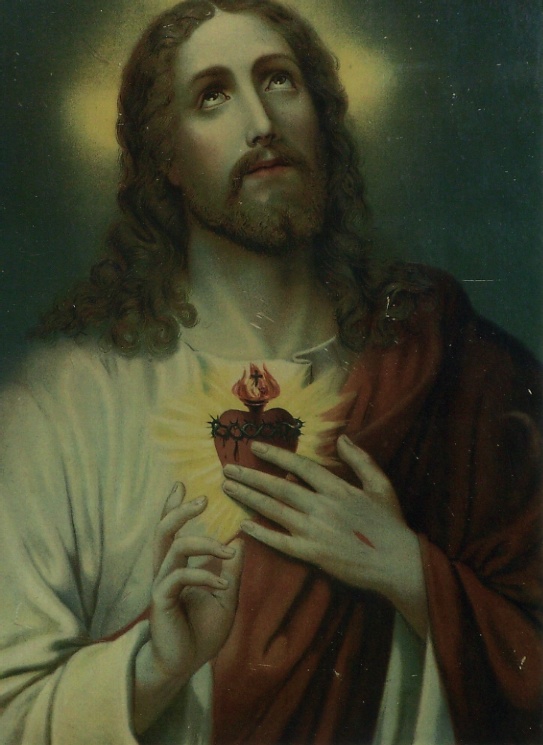
Welcome to the second of our seven pages introducing the Devotion to the Sacred Heart of Jesus, written for this site by Kim Buck.
Below you will find an Introduction to the series—which features links to further pages on different aspects of the Devotion. Or you can navigate through the series using this list of links:
Table of Contents
- An Introduction to the Devotion to the Sacred Heart of Jesus (this current page)
- The Holy Hour of Reparation
- The First Friday Devotion to the Sacred Heart of Jesus
- The Annual Feast of the Sacred Heart of Jesus
- Exposition of the Image of the Sacred Heart
- Enthronement of the Sacred Heart in the Home
- Prayers to the Sacred Heart of Jesus
Various internal links in this series will also take you to further articles of relevance at this site (for example long articles about St Margaret Mary and St. Claude La Colombière). There is also an archive of posts devoted to the Sacred Heart (here).
About the Holy Hour
Following the Apparitions of the Sacred Heart of Jesus to Saint Margaret Mary, the practice of the First Friday Communion and Devotions became widespread throughout the Church. But the Holy Hour was not immediately recognised in the same way. Rather it seems that Our Lord’s instructions for the Holy Hour were initially regarded as a private Devotion for Saint Margaret Mary herself and it seems to have been forgotten.
It was only a century and a half later that this Devotion was rediscovered and taken into popular practice and it spread rapidly. Born out of Paray-le-Monial, there were soon Confraternities and Archconfraternities dedicated to the Holy Hour of Reparation. Some of these still exist today.
So, how do we make this Holy Hour of Reparation? Let us look at the requests Our Lord made for this weekly devotion.
Every night between Thursday and Friday I will make thee share in the mortal sadness which I was pleased to feel in the Garden of Olives.
And in order to bear Me company in the humble prayer that I then offered to My Father, in the midst of My anguish, thou shalt rise between eleven o’clock and midnight and remain prostrate with Me for an hour, not only to appease the divine anger by begging mercy for sinners, but also to mitigate in some way the bitterness which I felt at that time on finding Myself abandoned by My apostles, which obliged Me to reproach them for not being able to watch one hour with Me.
Let us closely examine these words, outlining exactly that which Our Lord is asking.
1. “Every night between Thursday and Friday. . . thou shalt rise between eleven o’clock and midnight and remain prostrate with Me for an hour.”
The time given for this Devotion to Saint Margaret Mary is very clear: between 11 pm and midnight on the Thursday night.
In the initial instruction to the Saint Margaret Mary, it would seem that this timing constitutes a small act of sacrifice, to console our Lord and appease divine anger, which takes place between the night of the Agony and the day of the Crucifixion. The linkage between the two is surely significant!
However, since the time of this initial instruction, perhaps intended only for the Saint herself or other religious like her, the Magisterium of the Church has established a more relaxed rule as to the the time and day that this Holy Hour can be prayed.
Thus the Church has decreed that publicly or communally a Holy Hour can be celebrated at any point in the week as decided by the Priest or religious director.
However, privately the situation is different. According to the New Catholic Dictionary of 1910, the private practice of the Holy Hour is restricted to between 2 PM Thursday and 6 PM Friday.* (See Note below).
In relaxing the rule given to Saint Margaret Mary, the Holy See probably had in mind the situation of many lay people in the modern world, whose lives were less suited to such rigour than those committed to monastic life. Perhaps it was judged that is it is better to uphold the practice of a Holy Hour each week, rather than lose it because the time our Lord requested of Saint Margaret Mary was too difficult to keep.
Personally speaking, having prayed the weekly Holy Hour for many years now, I would recommend that the best time for this prayer, if possible, is that which Our Lord requests, between 11 o’clock and midnight on Thursday nights.
For this reflects what Our Lord asked of Saint Margaret Mary – that she share in that suffering which He experienced in Gethsemane: between the Thursday night of the Passover, after He inaugurated the Holy Eucharist and the infamous Friday that He died for our sins on the Cross.
But, as the Church has suggested, it is better to make the Holy Hour at a suitable time for oneself, rather than not at all because one simply cannot keep to Our Lord’s request.
2. “I will make thee share in the mortal sadness which I was pleased to feel in the Garden of Olives.”

This is a deep mystery, as to why Our Lord wants us to share in His mortal sadness. Yet it is a mystery that we need to ponder if we are to fulfil His Holy wish.
Our Lord desires that the “mortal sadness” He felt on that agonizing night, be shared. He is revealing His humanity to us, pleading for us to be with Him, to share the pain He felt. But perhaps more importantly, the effects of this hour of prayer, will be to open our own tiny hearts to the sin of the world.
I wonder if Our Lord is attempting to induce us to open our hearts to our own plight, to make us more conscious of that which we are doing: of how we are living and praying and thinking in our daily lives. For He felt the entirety of our sin, which he took upon Himself, resulting with His dying for us on the Cross.
Whilst this immeasurable deed of His Passion and Cross, is eternally working in our souls and in our world, we nevertheless have Free Will. We continue to sin, for we continually turn away from Our Lord and His goodness.
Is He asking of us, in this very human way, to confront our continued sinfulness? That is, to confront our sin, which has caused His “mortal sadness”?
3. “In order to bear Me company.”
With these words, we understand that this will be no easy task. For to bear something implies that it is heavy, it is a burden, it is not easy.
And of course, our sin is a burden, it is heavy, neither an easy thing to examine, nor take seriously enough that we change.
As Catholics, our sin is under constant examination, as we say our evening prayers, with the Confetio and act of contrition and prepare for our confessions.
Yet, “in order to bear [Him] company”, we need to look even more closely, carefully and deeply at the wrongs we commit. So that when we “bear Him company, we will naturally become more serious about our lives, our actions. We will become more conscious of all that which we say and do.
4. “Not only to appease the divine anger by begging mercy for sinners.”
In the Garden of Olives, Our Lord experienced the weight of our sin.
He felt the weight, so much so that it made Him sweat drops of blood. He asked, he begged that the bitter cup be taken from Him.
The cup that was the weight of our sin. The cup that was so difficult for Him, a human person, to taste. Yet the cup was not taken away from Him. For the Father willed it so. The Father willed that His Son would taste of the bitter cup.
Our Lord Himself, was to become the victim for our sin. He was to make the greatest sacrifice ever made, in the giving of His life, for each and every one of us. In order to conquer sin, the death that we live in daily, He Himself was to be immolated.
This in its entirety was His “mortal sadness”. To feel our sin, to feel the gravity as a human person of all that this means: to die for our sin, to take it completely upon Himself, in order to bring us Life.
Yet whilst He has given us this greatest of gifts, renewed daily in the Sacrifice of the Mass, we continue to sin. We continue to turn away from Him. Therefore, He is imploring us to beg to the Father for mercy – for sinners, for ourselves (as we are all sinners).
Let us join him in the garden in making reparation for sin.
5. “Also to mitigate in some way the bitterness which I felt at that time on finding Myself abandoned by My apostles, which obliged Me to reproach them for not being able to watch one hour with Me.”
Whilst we have just explored a little of what it means to appease Divine anger, we are now presented with something entirely different.
Here, we discover a tenderness, a friendship with Our Lord, in that He asks us to console Him. For only friends ask one another for consolation; people one can trust.
Our Lord is placing trust in us that we will act upon His request, that we will indeed console Him. As He says
“to mitigate in some way the bitterness which I felt at that time on finding Myself abandoned.”
With the Apparitions of Saint Margaret Mary, Our Lord reveals Himself in a deeply human way. We experience in these apparitions a very human person in the Sacred Heart of Jesus.
A human person who expresses His pain, His loneliness, His sadness, the fact that He has been abandoned and His disappointment in that He needed to “reproach” His Apostles.
To deepen our understanding of the person of Jesus Christ – asking as the Sacred Heart, for consolation, for us to share in that mortal sadness He felt in the Garden of Olives- let us now look at the actual situation in which Jesus found Himself in Gethsemane.
After having instituted the Holy Eucharist at the Passover with His Apostles, Jesus comes with them to Gethsemane. In the Gospel of Saint Matthew, we read:
Then Jesus came with them into a country place which is called Gethsemani; and said to his disciples: Sit you here, till I go yonder and pray. And taking with him Peter and the two sons of Zebedee, he began to grow sorrowful and to be sad. Then he saith to them: My soul is sorrowful even unto death: stay you here, and watch with me. And going a little further, he fell upon his face, praying, and saying: My Father, if it is possible, let this chalice pass from me. Nevertheless not as I will, but as thou wilt.
And he cometh to his disciples, and finding them asleep, and he saith to Peter:What? Could you not watch one hour with me? Watch ye, and pray that ye enter not into temptation. The spirit indeed is willing, but the flesh weak. Again the second time, he went and prayed, saying: My Father, if this chalice may not pass away, but I must drink it, thy will be done.
And he cometh again, and findeth them sleeping: for their eyes were heavy. And leaving them, he went again: and prayed the third time, saying the selfsame word.Then he cometh to his disciples, and saith to them: Sleep ye now and take your rest; behold the hour is at hand, and the Son of man shall be betrayed into the hands of sinners.
Matthew 26:36-46
A French Priest, the Reverend Father A. Tesniere, used this gospel passage to develop his ideas and thought on praying the Holy Hour. In a small booklet, he produced these ideas, in order to help us pray the Holy Hour more deeply, more reverently, with adoration and gratitude. Father Tesniere writes:
Adore Jesus when He says to His Apostles: “My soul is sorrowful even unto death.” Believe the absolute truth of these words: they are no figure of speech, it is no exaggeration of His sorrow. Without a very special help from His Divine Nature, Jesus is so sorrowful at this moment that His sadness would be sufficient to cause Him to die.
His sorrow fills not only His imagination and His heart, but even His whole soul, His will and His understanding. His sorrow comprises disheartenment, dejection, revulsion, languor of mind, worry, bitterness, fear, overwhelming anguish; it is so piercing that it causes a sweat of blood to break out over Him: He falls crushed by the weight of His misery.
Let us spend this precious Holy Hour of prayer and reparation, each Thursday night, reflecting on these words. Let us focus, as fully and deeply as we are able, on our Lord’s suffering. Let us bring to life the prayer and agony that Our Lord suffered, throughout that night, between Thursday and Friday in the garden of Gethsemane.
The prayer and agony He suffered between the Thursday, of the instigation of the Eucharist, the greatest of gifts and the Friday of the Crucifixion, the greatest of Sacrifices. Throughout this night, Our Lord suffered His Passion.
It was here that His soul was “sorrowful unto death”. It was here that He felt the “mortal Sadness” He wants us to “bear” with Him. It was here that He was abandoned by His disciples and needed to reproach them for their misconduct. It was here that He wants us to make reparation and watch one hour with Him, in order to beg mercy for sinners and to appease Divine anger.
It is here in the Garden of Gethsemane that our Lord asks us to be with Him, each and every week between Thursday and Friday, to pray, to console, to make amends.
Other Pages in this Section of our website introducing the Sacred Heart Devotion can be found with this:
Table of Contents
- An Introduction to the Devotion to the Sacred Heart of Jesus
- The Holy Hour of Reparation
- The First Friday Devotion to the Sacred Heart of Jesus
- The Annual Feast of the Sacred Heart of Jesus
- Exposition of the Image of the Sacred Heart
- Enthronement of the Sacred Heart in the Home
- Prayers to the Sacred Heart of Jesus
Update 2017 and 2023:
I would just like to add to this page that my husband Roger Buck, now author of a book on the Sacred Heart (Cor Jesu Sacratissimum – here at Amazon worldwide) also has a two-part EWTN interview about his conversion to the Faith as well as the Sacred Heart.
The first part is more about the New Age (from which he converted) but in the second part he talks about our experiences on pilgrimage to Paray-le-Monial in France, experiences which completely changed both of our lives and led to the creation of this website dedicated to His Most Sacred Heart.
The second part though is stand-alone—that is to say it stands by itself. You do not need to listen to the first part. You can easily skip to the second part which has many beautiful thoughts and insights about Paray-le-Monial and the Spirituality of the Sacred Heart of Jesus.
* Footnote to the Above: While I trust this information from 1910, I have been unable, as yet, to discover whether the ruling has been amended since 1910. I would be grateful to anyone who can clarify this for me. For while it is commonly reported that the Holy Hour can now be made at any time during the week, I suspect this applies to public situations only.
Foreword for Monarchy by Roger Buck
Buying Books at Amazon Through These Links Gives Us a Commission. This Supports Our Apostolate. Thank You if You Can Help Us Like This!

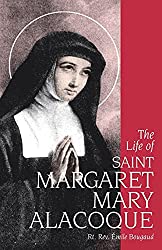

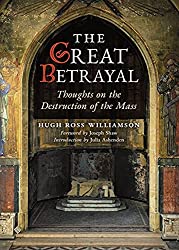
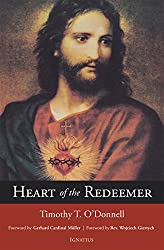
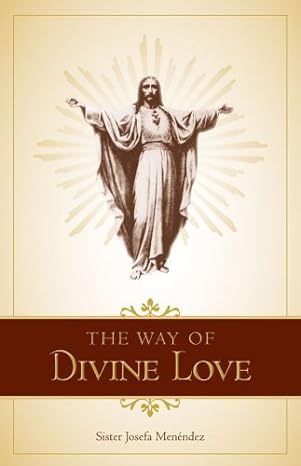




Comments
comments are currently closed
4 responses to “The Holy Hour of Reparation”
[…] I prayed my Holy Hour before Thee on Thursday night, many feelings and thoughts came upon […]
[…] the weekly Holy Hour and the monthly First Friday, this is the third and annual element of a Sacred Triad, called for by […]
I have just discovered Night Adoration in the Home devotion. Merciful Jesus, thank you so much!
Thank you for your lovely testimony, Annette.
Hi, I’m from the Philippines. I’ve been doing a Gethsemane holy hour every Thursday 11pm for quite sometime now. I am a very devoted Catholic ever since my 5th grade but one SSPX Ignatian Retreat in 2007 made me left the novus ordo at once and became a Traditional Catholic since then. In my experience, Out Lady and St. Joseph brought who guided me to the Traditional Mass and it is the Sacred Heart of Our Lord, during that retreat, that totally effected my conversion to the Traditional Catholic Faith.
I encountered this website the other day when was looking for a pdf copy of the Holy Hour of Reparation and i hot interested in the “Spirituality of the Sacred of Heart of Jesus” that Mr. Buck had discussed in the above Episode 4 video.
I wish to be included in your mailing list for more corjesusacratissimum post. Thank you and God bless!
This is very late in coming. The site has been very inactive lately and we missed it. But thank you for offering this moving story of your faith since childhood and your discovery of the Tradition via the Sacred Heart of Our Lord, Jesus Christ. I will add you at long last to our (very irregular) mailing list and please forgive me for neglecting your beautiful comments for so long.